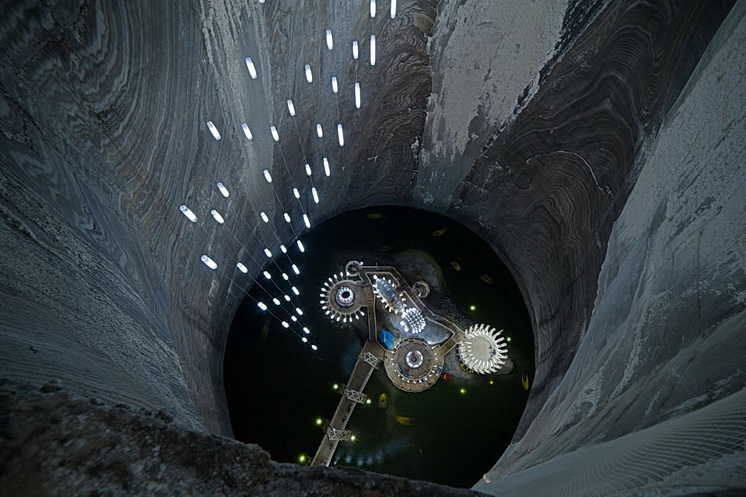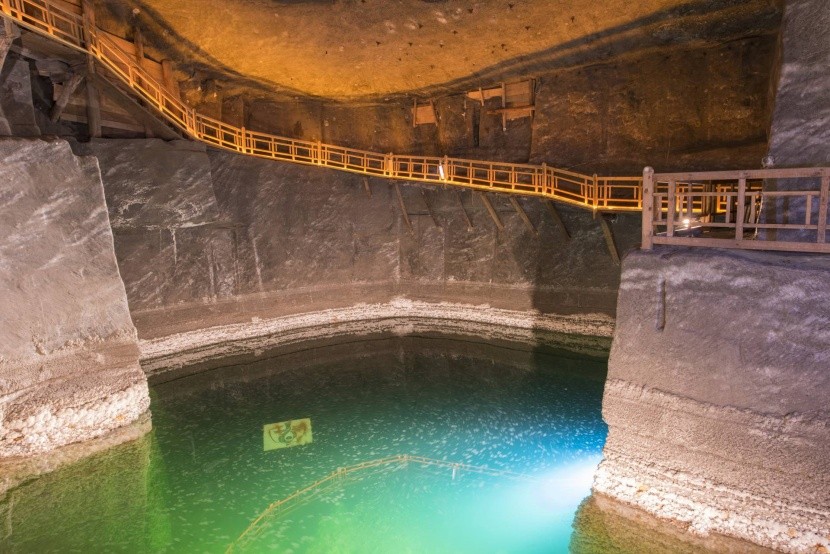Salt mines

Důl TURDA je velkým lákadlem pro návštěvníky, je zde koncertní pódium, sportovní hřiště, ruské kolo, minigolf, bowling a podzemní azurové jezírko s loďkami.
The Polish salt cathedral – Wieliczka belongs to the oldest and most beautiful salt mines in the world. It has been operating without stopping since the 13th century till the 21st century. It has been a part of the UNESCO World Heritage List since 1978. Today, it is a tourist centre where more than a million visitors go every year.
The mine is 327 metres deep and the overall length is 300 kilometres. Only a minimal part of it is accessible to the public. Still, the 3.5 kilometres long route is an amazing experience. A part of the mine is dedicated to the history of salt mining and another part serves as a concert hall, chapel, restauration, and there is even an underground lake. The visitors can go on the tour with miner’s lamps or burners, even in the narrowest tunnels and salt seams like the medieval miners.

Klodawa is the last functioning salt mine in Poland. Salt has been mined here only since the middle of the 20th century. The traditional way of mining allows to fully maintain the natural character of the beauty created by salt.
One of the oldest mines in Europe can be found in Hallstatt, Austria. The renovated mine is currently open to the public. You can expect a professional guided tour, a slide, and an underground salt lake.
A giant salt mine Turda can be found in the middle of Transylvania, Romania, in the Cluj district. The salt had been mined here since the 2nd century until the first half of the 19th century without the use of explosives. This makes the mine even more important. Around 3 million tonnes of salt have been mined here during its operation. These underground areas served as a bomb shelter during the WWII. Later they became cheese store rooms. At the beginning of the 90s the mine was opened for the public.
Salt phenomena
Under specific conditions, salt can create very interesting phenomena. In the Atacama Desert, there is the Moon Valley where you can see 30 cm crystals of salt. In the Death Valley, in California, there is so called “Badwater”, which is a result of salt lake evaporation in areas of great droughts. There are strange salt formations. It is literally a desert of sodium chloride. The Mono Lake in California also offers a unique natural phenomenon. Its surface is covered with dripstone formations in the form of columns, towers, cones, pyramids, and heaps made of salt and other materials.
The importance of salt.
Salt is especially important as food (people consume 7 to 8 kilogrammes of salt annually), during fish processing, in the food industry, in animal breeding, metallurgy, chemical industry, road maintenance in winter, as fertilizer in agriculture, or as therapeutic salt baths. It is also used for the production of glazing, starch, and textile dying. Thanks to the ionized air, presence of no pathogenic bacteria, moisture, and local pressure, it has positive healing effects on asthma and allergies.
Source: Lomy a těžba
